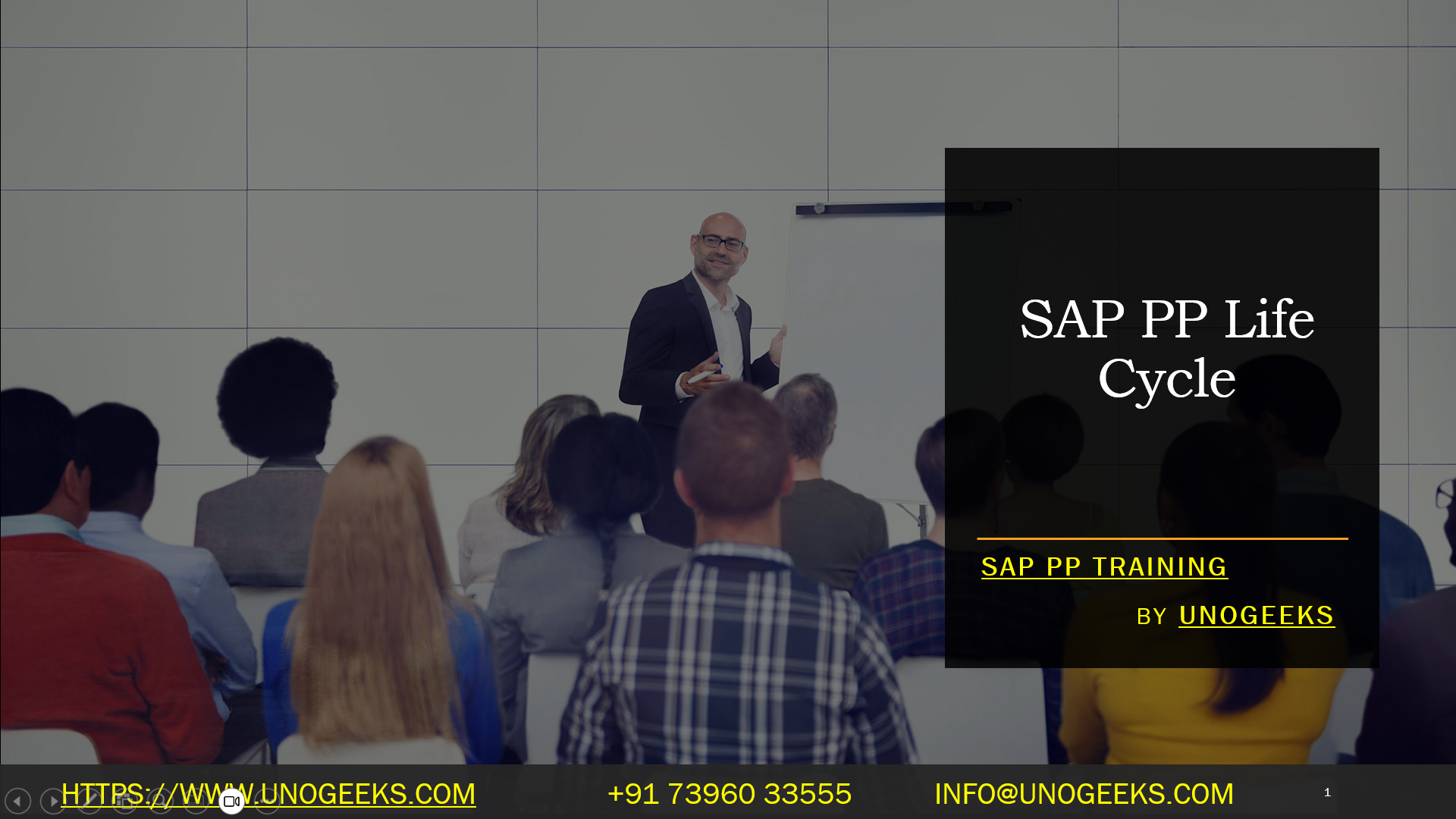SAP PP Long Term Planning
From Sales Forecast to Shop Floor: Mastering the SAP PP Life Cycle
The lifeblood of any manufacturing company is its production process. But how do you ensure efficiency, meet demand, and keep costs under control? That’s where SAP PP (Production Planning) comes in.
SAP PP offers a comprehensive suite of tools to manage your production life cycle, from initial planning to final execution. But this powerful functionality can seem complex at first. This blog will break down the critical stages of the SAP PP life cycle, making it easier for you to understand and optimize your production processes.
The Stages of the SAP PP Life Cycle
- Demand Management: It all starts with understanding what you need to produce. SAP PP integrates with Sales & Operations Planning (SOP) to forecast demand and translate it into concrete production plans. This stage might also involve creating Planned Independent Requirements (PIRs) for in-house produced materials.
- Material Requirements Planning (MRP): Here’s where the magic happens. MRP takes your production plans and Bill of Materials (BOMs) to calculate the exact amount of raw materials, components, and sub-assemblies needed for production. It also factors current inventory levels and lead times to generate Purchase Requisitions (PRs) for missing materials.
- Capacity Planning & Leveling: Not all machines and workers are created equal. Capacity Planning helps ensure you have the resources to meet your production goals. It identifies potential bottlenecks and allows you to level production by adjusting schedules or allocating resources more efficiently.
- Production Order Creation: With a clear understanding of demand, materials, and capacity, it’s time to create Production Orders (POs). POs define what, how much, and when to produce each finished good. They also assign resources and work centers and schedule production activities.
- Production Execution & Confirmation: This is where the rubber meets the road. Production staff uses POs as a roadmap to execute the manufacturing process. During production, workers confirm completed stages and report on material consumption. This real-time data helps monitor progress and identify any deviations from the plan.
- Production Order Close: Once production is complete, the PO is closed. This final step involves settling costs, updating inventory levels, and recording production variances. Analyzing these variances helps identify areas for improvement and optimize future production runs.
Optimizing Your SAP PP Life Cycle
By understanding and mastering each stage of the SAP PP life cycle, you can achieve significant benefits:
- Improved Production Efficiency: Streamlined processes and better resource allocation lead to faster production times and reduced waste.
- Enhanced Demand Forecasting: Accurate forecasts ensure you have the materials to meet customer needs without overstocking.
- Reduced Production Costs: Optimized capacity planning and material usage minimize unnecessary expenses.
- Greater Visibility & Control: Real-time data provides insights into production progress, allowing for proactive problem-solving.
Conclusion
The SAP PP life cycle offers a robust framework for managing your production process. Leveraging its functionalities can give you a competitive edge through efficient production, reduced costs, and exceptional customer service. Whether you’re a seasoned production planner or just starting with SAP PP, understanding these key stages will empower you to optimize your manufacturing operations.
Conclusion:
Unogeeks is the No.1 IT Training Institute for SAP PP Training. Anyone Disagree? Please drop in a comment
You can check out our other latest blogs on SAP PP here – SAP PP Blogs
You can check out our Best In Class SAP PP Details here – SAP PP Training
Follow & Connect with us:
———————————-
For Training inquiries:
Call/Whatsapp: +91 73960 33555
Mail us at: info@unogeeks.com
Our Website ➜ https://unogeeks.com
Follow us:
Instagram: https://www.instagram.com/unogeeks
Facebook:https://www.facebook.com/UnogeeksSoftwareTrainingInstitute
Twitter: https://twitter.com/unogeek
